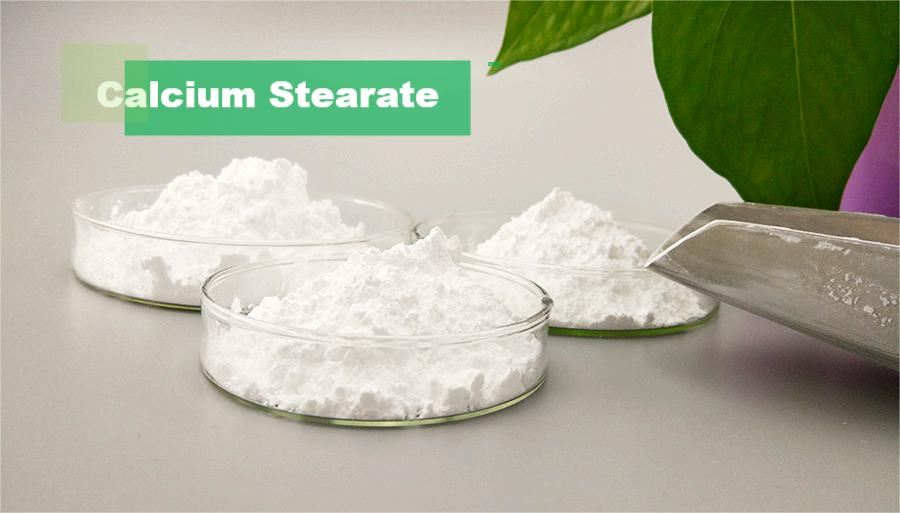For product information and pricing, Chat with sales agent:
or email us : sales@clirik.com
Click links below to see related products.

Calcium stearate is a white, waxy powder that is a calcium salt derived from stearic acid. Stearic acid is a saturated fatty acid found in many animal and vegetable fats. The chemical formula for calcium stearate is Ca(C17H35COO)2.

Here are some key properties and uses of calcium stearate:
1. Appearance: White, fine powder or granules.
2. Solubility: Insoluble in water but soluble in organic solvents.
3. Functionality:
It is commonly used as a release agent and lubricant in the plastic and rubber industry during the manufacturing process.
In the production of PVC (polyvinyl chloride), calcium stearate is used as a stabilizer to prevent the breakdown of the polymer during processing.
4. Pharmaceuticals: It is used in the pharmaceutical industry as a tablet and capsule mold release agent.
5. Food Industry: Calcium stearate is sometimes used as a food additive, primarily as a flow agent in powdered foods.
6. Cosmetics: It is used in the formulation of cosmetics and personal care products as a thickening agent and to improve the texture of creams and lotions.
7. Other Applications: It is also used in the production of some types of paints, inks, and coatings.
Calcium stearate is generally considered safe for use in these applications, and it has a wide range of industrial uses due to its lubricating and release properties. It's important to note that the safety and suitability of any chemical compound depend on the specific application and the regulations governing its use in different industries.
Grinding calcium stearate refers to the process of reducing the particle size of calcium stearate particles. This process is often employed to achieve specific particle size distributions or to improve the dispersion and performance of calcium stearate in various applications. Here are some key points related to the grinding of calcium stearate:
l Particle Size Reduction: Grinding is done to reduce the size of calcium stearate particles. This is important in industries such as plastics, rubber, and pharmaceuticals, where specific particle sizes are required for optimal performance.
l Improved Dispersion: Grinding can enhance the dispersion of calcium stearate in a material, making it more effective as a lubricant, release agent, or stabilizer.
l Mechanical Grinding: This can involve using various types of mills, such as ball mills or hammer mills, to physically break down the particles.
l Jet Milling: In this method, high-speed jets of compressed air or steam are used to impact particles, resulting in size reduction.
l The degree of grinding can be controlled to achieve the desired particle size distribution. Different applications may require different particle size ranges.
l The choice of grinding equipment depends on factors such as the initial particle size, desired final particle size, and the characteristics of the material being ground.
l Care should be taken to avoid excessive heat generation during grinding, as this could affect the properties of calcium stearate.
l Dust control measures may be necessary to ensure a safe working environment.
l Quality control measures are typically employed to ensure that the ground calcium stearate meets the required specifications.
l The grinding process may be tailored to the specific requirements of the end-use application. For example, in the plastic industry, finely ground calcium stearate is often used to improve the processing characteristics of PVC.
It's important to follow industry standards and guidelines when grinding calcium stearate, and manufacturers may have specific recommendations based on the intended application. Additionally, regulatory considerations and safety precautions should be adhered to during the grinding process.
The grinding of calcium stearate can be achieved using various types of grinding machines. The choice of the grinding machine depends on factors such as the particle size requirements, the characteristics of the material, and the desired final product. Here are some common types of grinding machines used for processing calcium stearate:
A ball mill is a type of grinder that is used for grinding and mixing materials. It operates by rotating a cylinder with steel grinding balls, causing the balls to fall back into the cylinder and onto the material to be ground.
Ball mills are commonly used in the chemical, pharmaceutical, and manufacturing industries for grinding purposes.
A hammer mill is a machine that crushes and grinds materials by the repeated blows of small hammers, often used for reducing particle size in the production of powders.
Hammer mills are suitable for various applications, including the grinding of calcium stearate.
Jet mills use high-speed jets of compressed air or steam to impact particles, resulting in size reduction.
Jet milling is effective for achieving fine particle sizes and is used in industries where a narrow particle size distribution is required.
Vibratory mills use vibrations to crush and grind materials. The grinding action is achieved through the tumbling motion of the media (usually steel or ceramic balls) inside the mill.
Vibratory mills are suitable for both wet and dry grinding processes.
An attritor mill is a type of stirred ball mill that consists of a stationary tank filled with grinding media and a rotating shaft with arms or discs. The grinding action occurs between the moving media and the stationary tank.
Attritor mills are often used for producing fine and ultrafine particles.
Pin mills use metal pins or blades to break up or crush materials. They are suitable for grinding soft to medium-hard materials.
Pin mills are used in various industries, including food, pharmaceuticals, and chemicals.
When selecting a grinding machine for calcium stearate, it's important to consider factors such as the desired particle size, production capacity, and the specific requirements of the end-use application. Additionally, proper maintenance and adherence to safety guidelines are essential for the efficient and safe operation of grinding equipment. Manufacturers or suppliers of calcium stearate may provide recommendations or guidelines for the most suitable grinding machine for their product.
